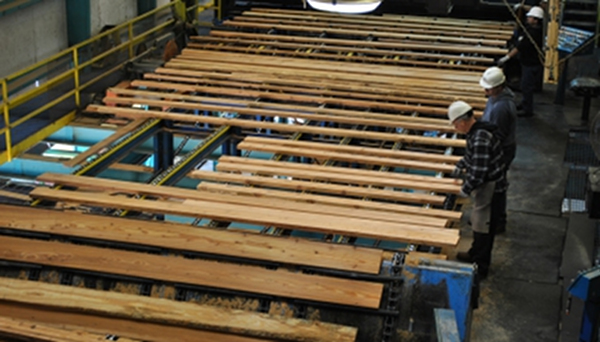The technical criteria necessary to gain points in the LEED system is a bit a green geekery with big real-world consequences. That’s because, as one of the most widely recognized green building standards in the world, the building materials you can use to gain LEED points wind up getting a big boost in the global market. Until now, LEED has relied on Forest Sterwardship Council certification to hand out green stars for projects making use of that fantastically carbon-sequestering, renewable resource known as wood. But a major consumer group is challenging that, citing — among other things — the fact that most certified sustainable forests are located outside of the U.S.
The American Consumer Institute (ACI) Center for Citizen Research, filed official comments last week to this effect with the U.S. Green Building Council (USGBC). In supporting its position that FSC should not be the only wood to gain points under the LEED system, ACI cites the findings of its new report that show “marketplace confusion” over certification standards. Meaning, basically, this: sales figures show that consumers are willing to fork over around 20 percent more for wood from FSC-certified forests. But because this wood is sourced from overseas, it may come with a heftier environmental price than, say, pine from South Carolina.

Another factor is the fact that it’s easier to gain FSC certification for selectively harvesting virgin forests in, say, Russia, than it is to do so for a well-managed and controlled forest in the U.S.
In their comments ACI urged the USGBC to adopt a more inclusive participation of certification programs. ACI President Steve Pociask went on record as saying, “A system that recognizes multiple programs would better maintain competition and encourage U.S. producers to more quickly adopt sound forest management practices and produce more environmentally-friendly wood and paper products. In turn, this would also incentivize organizations to achieve social and environmental benefits that are in balance with keeping consumer prices affordable and job creation on the rise.”

This issue is one to watch in the green building space, as the ACI is not the only organization representing the green building materials industry that would like to get a piece of the FSC’s action. Specifically, organizations that produce Life Cycle Assessment tools have been bending the ears of USGBC members around the country in recent years, resulting in proposed changes to LEED standards that would award green points to any building material shown to pose minimal harm to the environment over the course of its life cycle.
Life Cycle Assessment (LCA) tools work to reveal, through scientific research and a whole lot of calculations, exactly how much carbon a giving building material consumes over the course of its natural life. A few of the problems with their adoption into the LEED system — cited by the FSC, among others [PDF] — is that LCA tools are still largely non-stardardized, and that assessment methods fail to take into account the impact of building materials on human health (rather than simply the amount of carbon they account for).
Non-standardized means that each building material manufacturer can supply its own data and conduct its own testing, with some obvious potentials for fudging. And the human health component of manufactured materials clearly is not an issue when it comes to a good old fashioned tree.
In response to the outcry the USGBC has faced regarding the incorporation of LCA tools into its new standard, know as v4, the organization has put off its adoption until 2013. (Until then, the 2009 standards will remain in effect.)
Either way, it seems, the FSC’s monopoly on LEED points is being contested — and will likely be broken, one way or another.